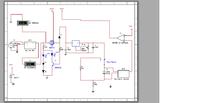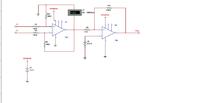Zanderist
Member level 3

- Joined
- Sep 16, 2010
- Messages
- 56
- Helped
- 9
- Reputation
- 18
- Reaction score
- 8
- Trophy points
- 1,288
- Location
- New York City
- Activity points
- 1,670
I've been looking all over the internet(Google) for some idea on making a lithium battery charger, or the basic principle behind it without the need of complex micro controllers.
What I've been finding is completed designs but not really any in-depth theory or formulas.
What I'm basically looking for is how to make a constant 4.2 volts and 420mA lithium charger circuit. I eventually want to be able to vary the current further down the road. I also would like to have something that would indicate when the battery is charging and when it has hit full charge.
What my limitations are that I only have LM317 regulators and no low ohm resistors. I also don't have a cross reference to some of the European transistors used in some designs.
I do also have tons of 2N3904 and 2N3906 transistors.
One other problem I have is I want to give is some kind of automation with a window comparator but I'm not too sure on how to sense a charge of battery without causing a current drop.
I haven't ventured that far out from mutlisim (i.e real breadboard prototypes ) for fear of damaging the limited parts I have.
What I've been finding is completed designs but not really any in-depth theory or formulas.
What I'm basically looking for is how to make a constant 4.2 volts and 420mA lithium charger circuit. I eventually want to be able to vary the current further down the road. I also would like to have something that would indicate when the battery is charging and when it has hit full charge.
What my limitations are that I only have LM317 regulators and no low ohm resistors. I also don't have a cross reference to some of the European transistors used in some designs.
I do also have tons of 2N3904 and 2N3906 transistors.
One other problem I have is I want to give is some kind of automation with a window comparator but I'm not too sure on how to sense a charge of battery without causing a current drop.
I haven't ventured that far out from mutlisim (i.e real breadboard prototypes ) for fear of damaging the limited parts I have.






